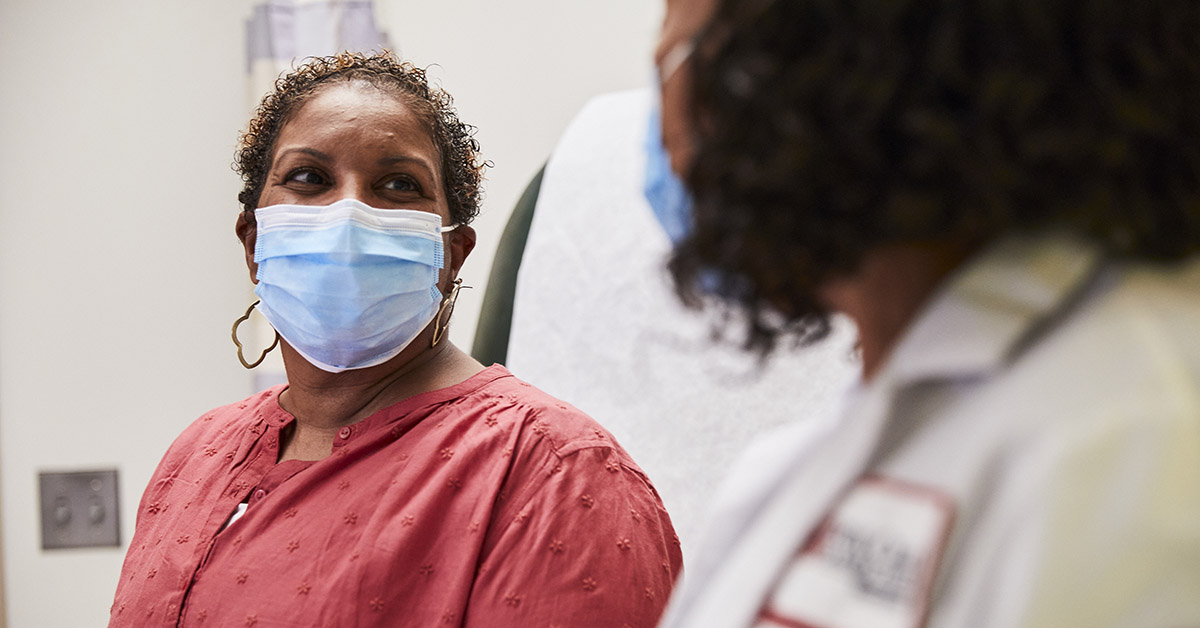
What is Benign Breast Disease?
-
Updated: February 25, 2020
Cancer may be the first thing that comes to mind if you notice a lump or change in one of your breasts. But before getting overly concerned, here’s something to keep in mind: Most breast changes are considered benign (noncancerous), they usually don’t put your health at risk, and they may even clear up on their own.
However, benign breast disease may need to be treated or monitored closely, especially if it is one that can raise your risk for breast cancer later on. Here is what you need to know.
Benign breast conditions to look out for
At some point, most women will be diagnosed with a benign breast condition, like a lump or mass, pain, an infection, nipple discharge, or skin changes. For instance, many women experience some swelling or lumpiness in their breasts (called fibrocystic breast changes) before their periods. And it’s not unusual to have lumpy breasts and a milky discharge during pregnancy, when a woman’s breasts are preparing to make milk.
The majority of benign breast diseases don’t become breast cancer. But there are a few that can make breast cancer more likely, explained Richard J. Bleicher, MD, FACS , a surgical oncologist at Fox Chase Cancer Center.
Fibroadenomas
These benign breast tumors feel like hard, round lumps and they move. Fibroadenomas can increase breast cancer risk slightly, but they are usually not treated because they sometimes go away on their own. “However, if the tumor bothers a woman or is growing over time, removing should be considered,” Bleicher said.
Atypia of the breast
Atypia are irregular spots or lesions that are often caught on a mammogram. “The cells aren’t cancerous, but they’re not completely normal looking,” Bleicher explained. “Atypia can increase the risk of breast cancer by around four-fold, so they’re typically removed.”
Lobular carcinoma in situ
This condition is similar to atypia of the breast, but there are more irregular cells. “When you have lobular carcinoma in situ, we remove the suspicious area to make sure there are no cancerous cells there,” Bleicher said.
Intraductal papillomas
These are finger-like growths inside the ducts of the breast. They may cause pain, a lump, and a clear, sticky, or bloody discharge. On biopsy these are tough to distinguish from cancer, so when a needle biopsy shows a papilloma, they are usually removed surgically.
Managing and treating benign breast disease
It’s important to watch for changes in your breasts and let your health care provider know if you notice anything unusual—even if it seems small. Your doctor can make a diagnosis and determine whether the change affects your breast cancer risk. And together, you can decide on next steps.
If your condition doesn’t raise your breast cancer risk and doesn’t bother you, you may not need to do anything at all. If it is bothersome, there are things you can do to feel better. For instance, mild discomfort caused by conditions like fibrocystic breast changes can often be managed with pain relievers or a supportive bra, while more painful cysts can be drained.
If your condition does raise your risk for breast cancer, your doctor may refer you to a risk assessment program, which can help determine your best options for cancer prevention. That might include more frequent screenings with mammograms, genetic testing, or taking medications that reduce the risk of breast cancer.
Fox Chase has a dedicated cancer risk assessment team that can help individuals and families learn if they may be at increased of many types of cancer.
Read more about the risk assessment program at Fox Chase.
